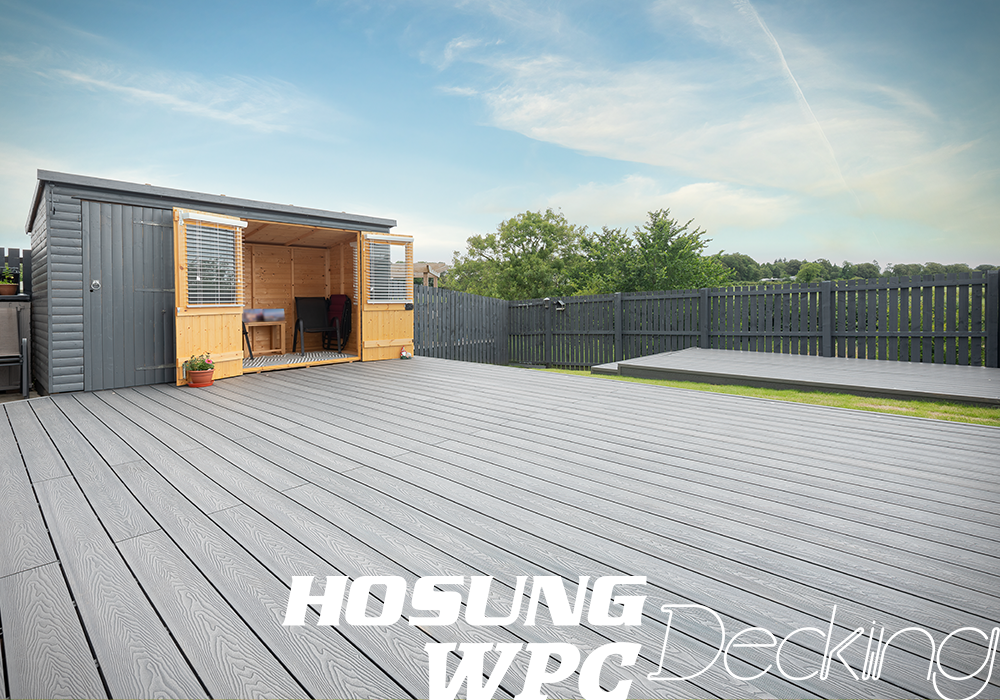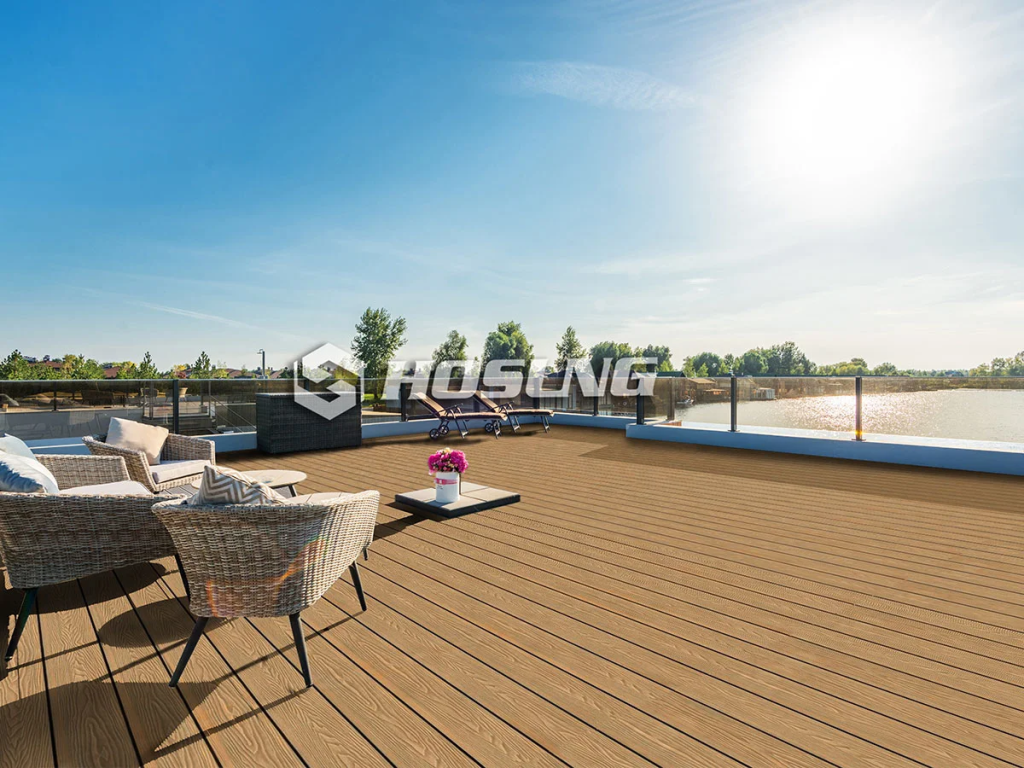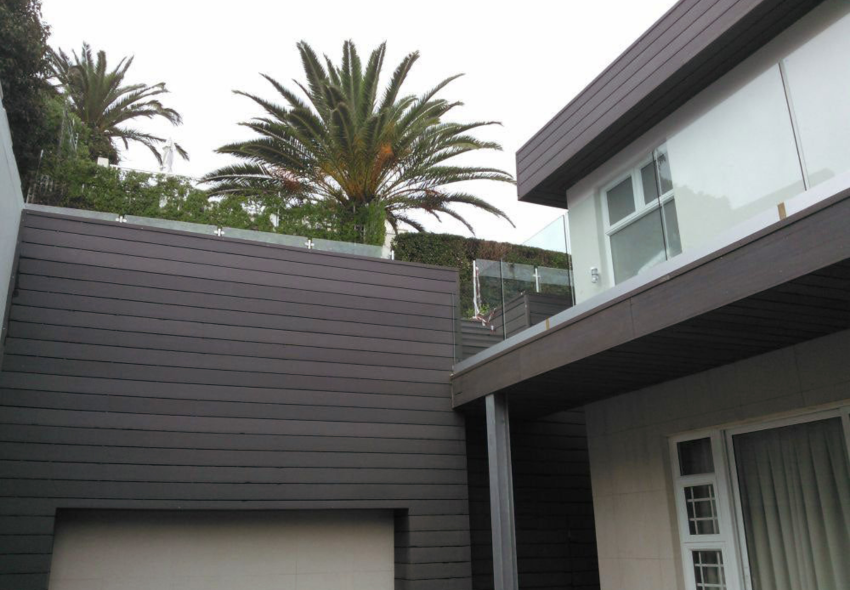Composite decking has gained immense popularity in Canada due to its durability, low maintenance, and aesthetic appeal. However, the cost of composite decking varies depending on several factors, including material quality, brand, installation costs, and regional differences. In this guide, we will explore the cost of composite decking in Canada in detail, covering various aspects such as material costs, labor expenses, long-term savings, and comparisons with other decking options.
Table of Contents
Factors Affecting the Cost of Composite Decking in Canada
The cost of composite decking in Canada is influenced by a variety of factors that impact both material prices and installation costs. Homeowners and contractors must consider these elements when budgeting for a decking project. Below are the key factors affecting the overall cost:
Material Composition
Composite decking is made from a blend of wood fibers and plastic, which enhances its durability and resistance to weathering. Some brands offer capped composite boards, which feature an additional protective layer to improve resistance against moisture, stains, and fading. These capped boards generally cost more than uncapped composite decking due to their superior longevity and aesthetic appeal. The specific ratio of wood fibers to plastic, as well as the type of polymer used (polyethylene, polypropylene, or PVC), also affects pricing.
Brand and Quality
The price of composite decking varies significantly depending on the brand and its reputation for quality. Top-tier brands like Trex, TimberTech, and Fiberon offer premium materials that come with longer warranties and advanced features like deep wood grain textures, UV resistance, and multi-tonal finishes. These brands are generally more expensive compared to lesser-known or budget brands, which may offer fewer customization options and shorter warranties. However, some budget-friendly brands still provide good performance for homeowners looking for cost-effective solutions.
Board Size and Thickness
The dimensions of composite decking boards play a significant role in determining their cost. Thicker and wider boards tend to be more expensive due to the increased amount of material used in their production. Standard composite deck boards are typically 1-inch thick and 5.5 inches wide, but premium options with greater thickness (e.g., 1.25 inches or more) provide enhanced durability and are often priced higher. Additionally, longer boards (e.g., 16 feet or more) reduce the number of seams and connections required, resulting in a cleaner aesthetic, but they come at a premium price due to transportation and handling considerations.
Aesthetic Features
Many homeowners opt for composite decking due to its aesthetic appeal, which closely mimics the look of natural wood without requiring constant maintenance. Higher-end composite decking products offer:
- Embossed wood grain patterns for a more realistic look.
- Multi-tonal color variations that enhance depth and visual interest.
- Matte or semi-gloss finishes that resist fading over time.
- Textured or grooved surfaces for better slip resistance.
These additional design elements contribute to the overall cost, as they involve advanced manufacturing techniques and materials.
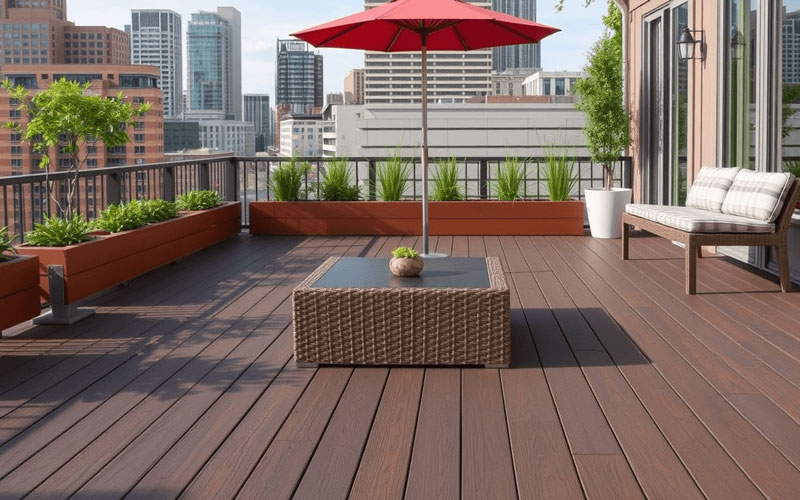
Location and Availability
The price of composite decking can fluctuate depending on the province or city in which it is purchased. In remote or less accessible regions, such as the Canadian Maritimes or Northern Territories, the cost of materials tends to be higher due to transportation and logistics expenses. Meanwhile, in metropolitan areas like Toronto, Vancouver, and Montreal, homeowners may find more competitive pricing due to the availability of multiple suppliers. Seasonal factors, such as increased demand in spring and summer, can also impact local pricing.
Market Conditions
Global and national economic factors can significantly affect the cost of composite decking in Canada. These include:
- Inflation: Rising material costs due to inflation can increase decking prices.
- Supply Chain Disruptions: Issues like shipping delays, raw material shortages, and manufacturing bottlenecks can lead to price spikes.
- Currency Exchange Rates: Since some composite decking brands import materials from the U.S. or other countries, fluctuations in exchange rates can impact Canadian prices.
- Seasonal Promotions: Many home improvement stores and decking suppliers offer discounts during off-peak seasons (fall and winter), making it possible to save on materials.
Average Price of Composite Decking in Canada
Considering these factors, the cost of composite decking in Canada typically ranges between $6 to $15 per square foot, with premium options exceeding $15 per square foot. Homeowners should carefully evaluate their budget and project requirements when selecting the best decking material for their needs.
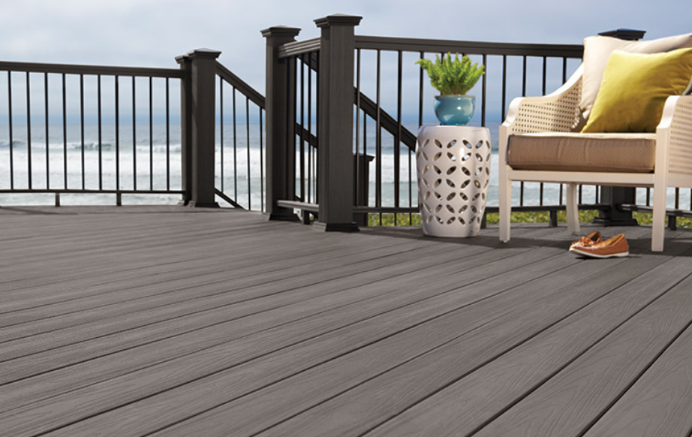
Material Costs of Composite Decking
The cost of composite decking materials varies based on quality, durability, aesthetics, and brand. Homeowners can choose from different pricing tiers depending on their budget and performance expectations. Below is a breakdown of composite decking prices in Canada, categorized into entry-level, mid-range, and high-end options.
Entry-Level Composite Decking ($6–$8 per square foot)
Entry-level composite decking is the most budget-friendly option, suitable for homeowners looking for an affordable alternative to traditional wood decking. Key features of this category include:
- Made from a basic blend of wood fibers and plastic without a protective cap.
- Offers limited color choices, often available in only a few standard shades like brown, gray, and tan.
- Lacks advanced aesthetic details such as embossed wood grain or multi-tonal color variations.
- More susceptible to staining, scratching, and fading over time compared to higher-end products.
- Typically comes with shorter warranties (10–15 years), reflecting its lower durability.
While entry-level composite decking still requires less maintenance than natural wood, it may not last as long or retain its appearance as well as premium options. It is a good choice for low-traffic areas or budget-conscious projects.
Mid-Range Composite Decking ($8–$12 per square foot)
Mid-range composite decking balances affordability with improved durability and aesthetics. Many homeowners find this tier to be the best value for money. Notable features include:
- Capped composite construction, meaning the boards have an added protective layer that enhances resistance to moisture, UV rays, and stains.
- A wider variety of colors and textures, including embossed wood grain patterns that mimic natural wood.
- Greater durability, making it more resistant to warping, cracking, and scratching than entry-level products.
- Longer warranties, typically ranging from 20 to 25 years, providing greater peace of mind.
Mid-range composite decking is an excellent option for homeowners who want a more durable and visually appealing deck without the premium price tag. It is suitable for moderate to high-traffic areas, including patios, pool decks, and outdoor entertainment spaces.
High-End Composite Decking ($12–$15+ per square foot)
High-end composite decking is designed for homeowners who prioritize luxury, longevity, and superior aesthetics. These premium products offer the highest level of performance and come with the following advantages:
- Manufactured using advanced materials and capped with multiple protective layers, ensuring superior resistance to stains, fading, and scratching.
- Features ultra-realistic wood aesthetics, often incorporating multi-tonal colors and deep embossed grain textures for a more natural appearance.
- Long-lasting durability, capable of withstanding extreme weather conditions, including heavy rain, snow, and prolonged sun exposure.
- Extensive warranties (25–50 years), with some brands even offering lifetime warranties.
High-end composite decking is ideal for luxury outdoor spaces, high-traffic commercial areas, and homeowners looking for a long-term investment. Although it has a higher upfront cost, it reduces maintenance expenses over time and maintains its aesthetic appeal for decades.
Additional Cost Considerations
In addition to material costs, homeowners should factor in installation fees, fasteners, and railing systems, which can add to the overall budget. Some premium decking brands also offer hidden fastening systems, which improve the deck’s appearance but may come at a higher cost.
- By understanding these different price tiers, homeowners can make informed decisions and select the best composite decking material for their needs.
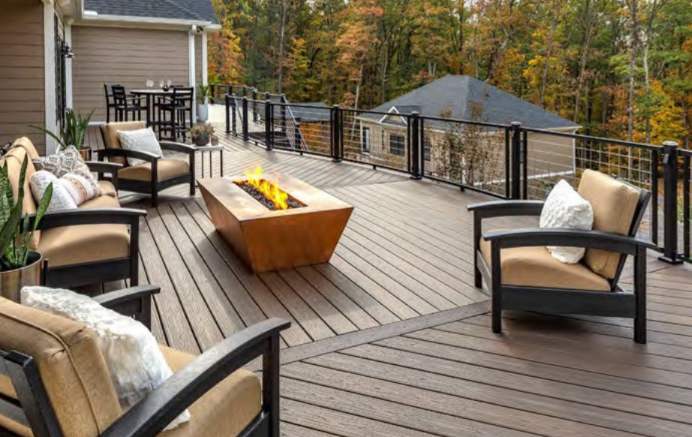
Installation Costs of Composite Decking in Canada
Labor costs vary depending on the complexity of the deck design, contractor expertise, and regional differences.
- DIY Installation: If you install composite decking yourself, you only pay for materials, saving on labor. However, you may need tools and extra time.
- Professional Installation: Hiring a professional can cost between $10 to $20 per square foot, depending on the complexity of the deck.
- Additional Costs: Factors such as deck framing, railings, stairs, and permits can add to the overall cost.
For a 200-square-foot deck, professional installation costs can range from $2,000 to $4,000, while high-end custom decks can exceed $10,000.
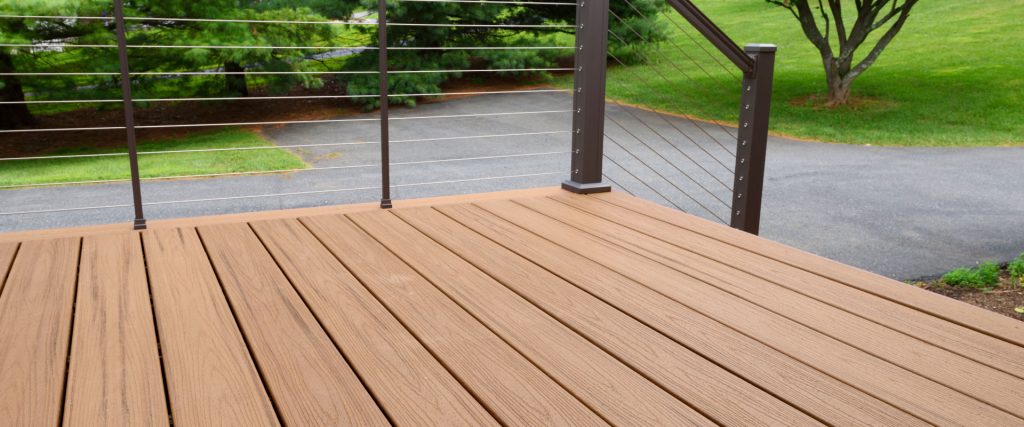
Long-Term Savings: Composite Decking vs. Wood
| Feature | Composite Decking | Wood Decking (Pressure-Treated) |
|---|---|---|
| Initial Cost | $6-$15/sq. ft. | $2-$5/sq. ft. |
| Maintenance | Low (occasional cleaning) | High (staining, sealing, repairs) |
| Lifespan | 25-50 years | 10-15 years |
| Resistant to Rot/Insects | Yes | No |
| Resistant to Fading | Yes (with capping) | No (requires frequent staining) |
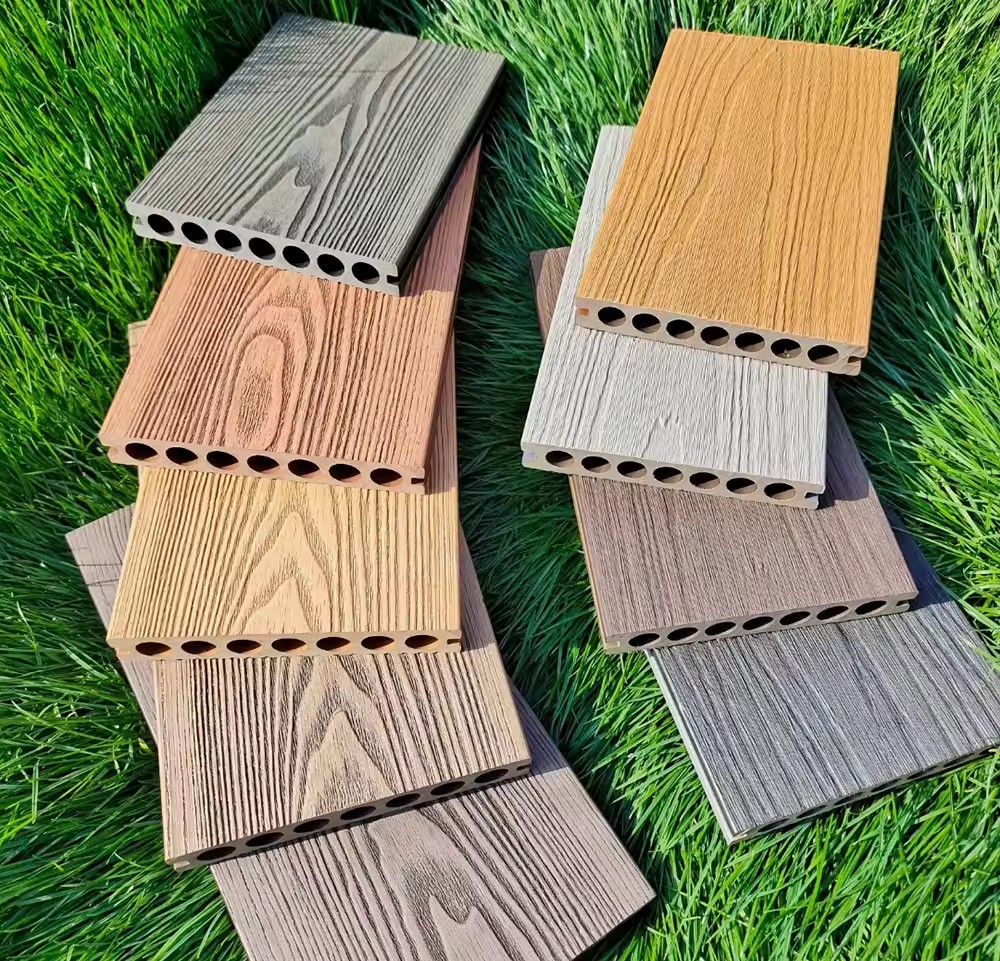
Comparing Composite Decking Brands in Canada
Some of the top composite decking brands available in Canada include:
- Trex: Known for affordability and eco-friendly materials. Prices range from $7 to $12 per square foot.
- TimberTech: Offers premium aesthetics and durability. Prices range from $8 to $15 per square foot.
- Fiberon: Mid-range to high-end options, priced between $6 and $14 per square foot.
- MoistureShield: Water-resistant and ideal for wet climates, priced between $7 and $13 per square foot.
Each brand offers different features, colors, and warranties, so selecting the right one depends on budget and preferences.
Hidden Costs of Composite Decking
Beyond the basic material and installation costs, there are additional expenses to consider:
- Substructure Costs: Composite decking requires a strong frame, usually made of pressure-treated wood or metal.
- Railings and Accessories: Custom railings, lighting, and built-in seating can add $1,000–$5,000 to the project.
- Permits and Inspections: Some provinces require permits for large decks, which may cost between $100–$500.
- Waste Disposal: Removing an old deck and disposing of materials can add another $200–$1,000.
Planning for these hidden costs helps prevent budget overruns.
Regional Price Differences Across Canada
Composite decking prices vary by province due to shipping costs, availability, and local demand.
- British Columbia & Alberta: Higher material costs due to transportation, averaging $8–$15 per square foot.
- Ontario & Quebec: Competitive pricing, ranging from $6–$13 per square foot.
- Maritimes & Northern Territories: Higher costs due to limited supply, averaging $9–$16 per square foot.
Checking local suppliers and comparing prices can help find the best deals.
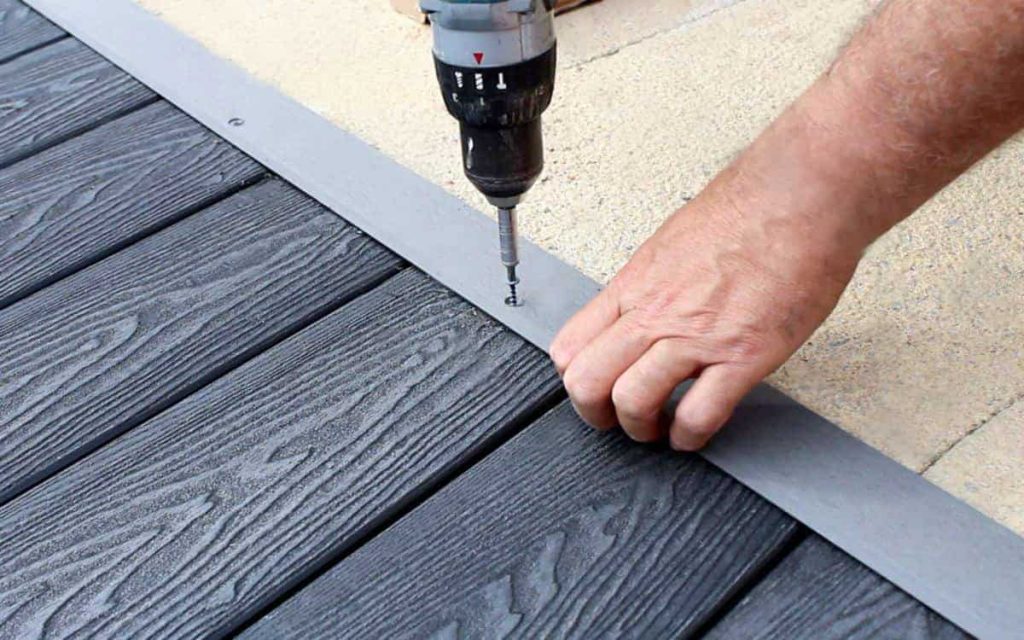
DIY vs. Hiring a Contractor: Cost Comparison
| Expense | DIY Installation | Hiring a Contractor |
|---|---|---|
| Material Cost | $6–$15/sq. ft. | $6–$15/sq. ft. |
| Labor Cost | $0 | $10–$20/sq. ft. |
| Total for 200 sq. ft. | $1,200–$3,000 | $3,200–$7,000 |
Tips for Saving Money on Composite Decking in Canada
- Buy During Off-Season: Prices drop in late fall and winter when demand is low.
- Look for Promotions: Home improvement stores often offer discounts and rebates.
- Consider Factory Seconds: Some manufacturers sell discounted decking with minor imperfections.
- Use Standard Sizes: Custom-cut boards increase costs, so stick to standard lengths.
- Compare Multiple Suppliers: Check prices from different retailers and suppliers.
- Opt for a Simple Design: Complex layouts and multi-level decks increase labor and material costs.
Conclusion
The cost of composite decking in Canada depends on material quality, brand, installation costs, and location. While composite decking has a higher upfront cost than traditional wood, it provides long-term savings through durability and low maintenance. By choosing the right brand, considering DIY installation, and shopping smartly, homeowners can optimize costs and enjoy a long-lasting, beautiful deck.

